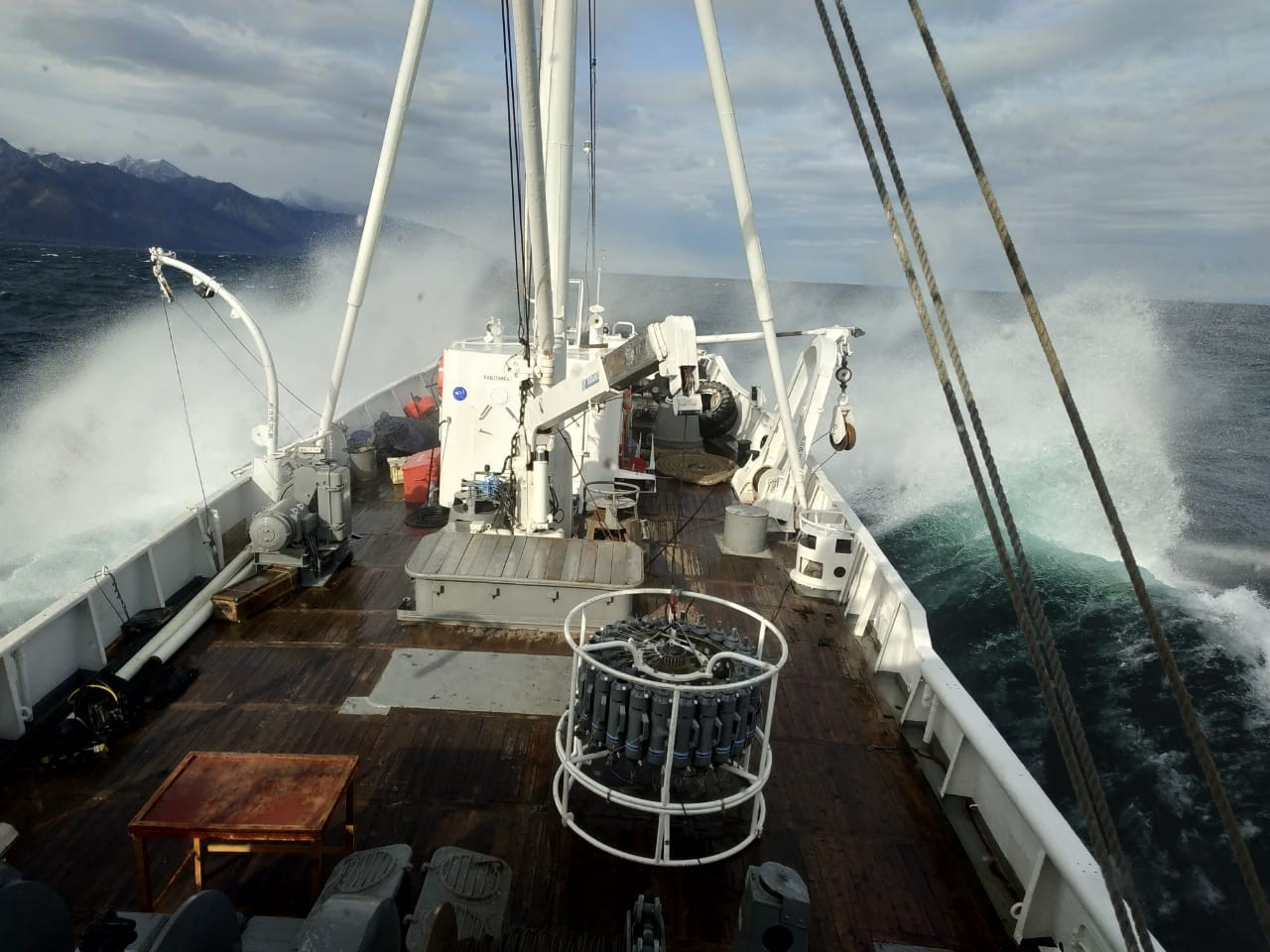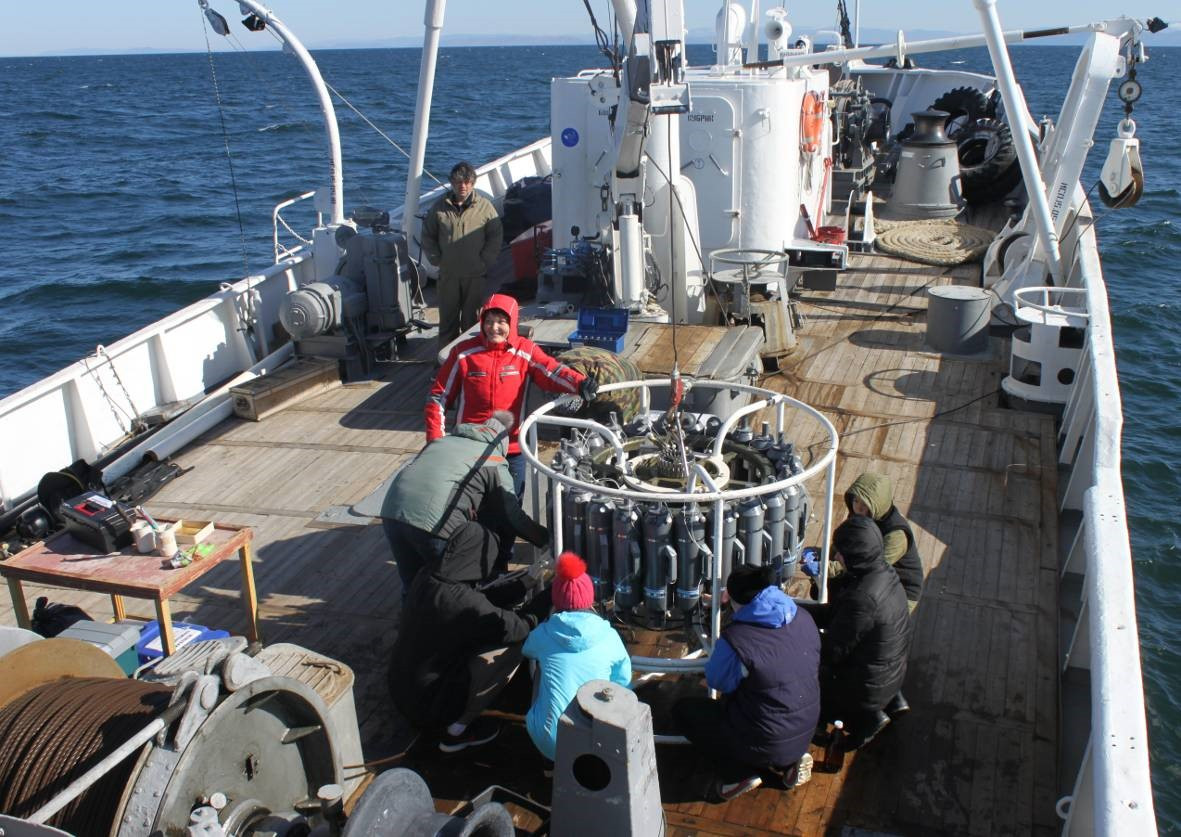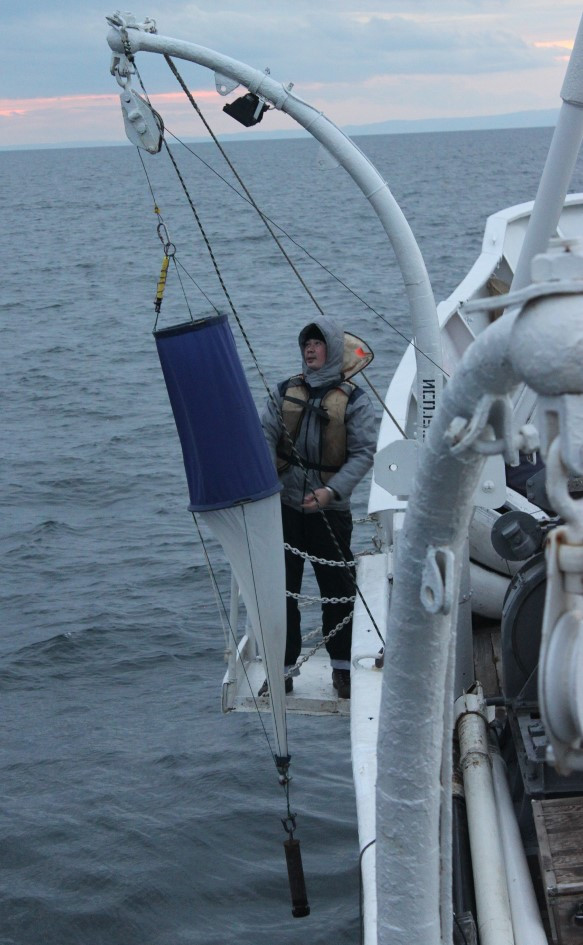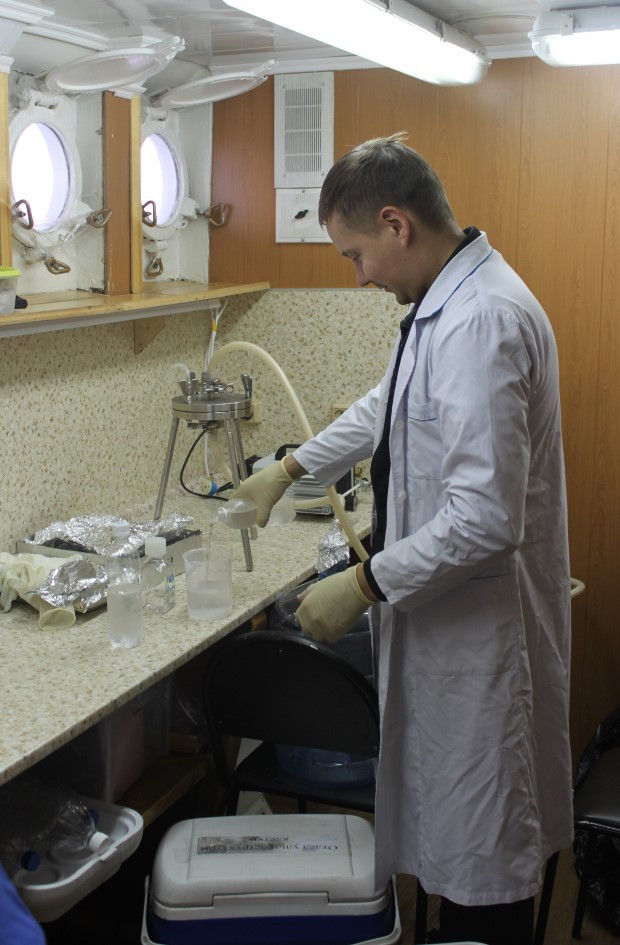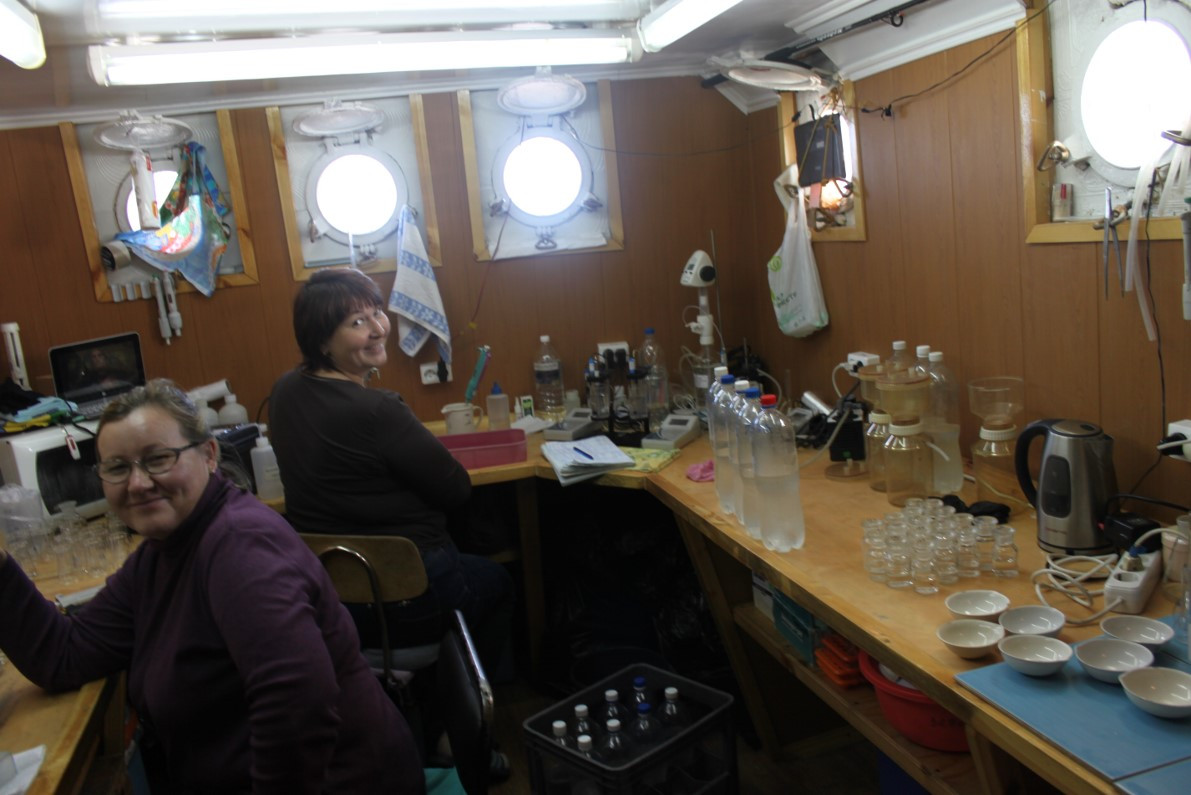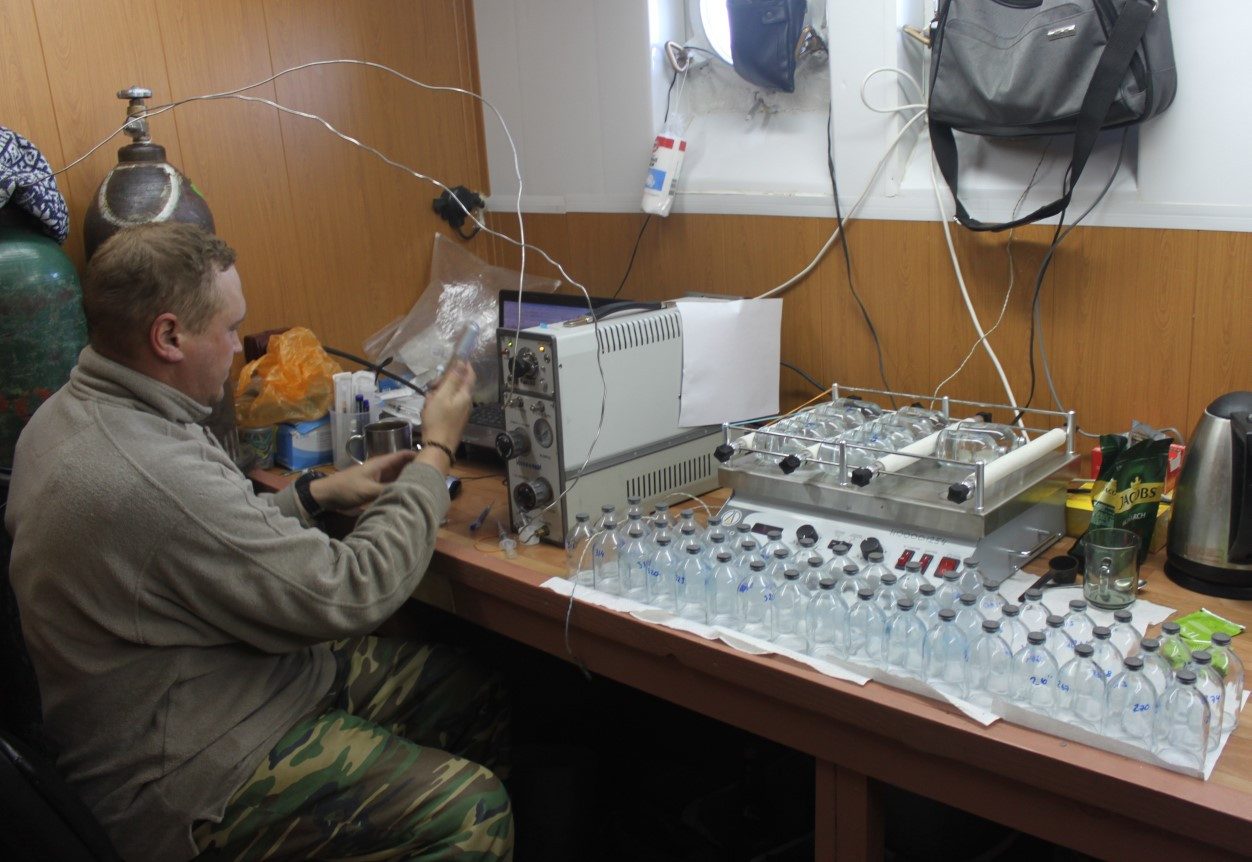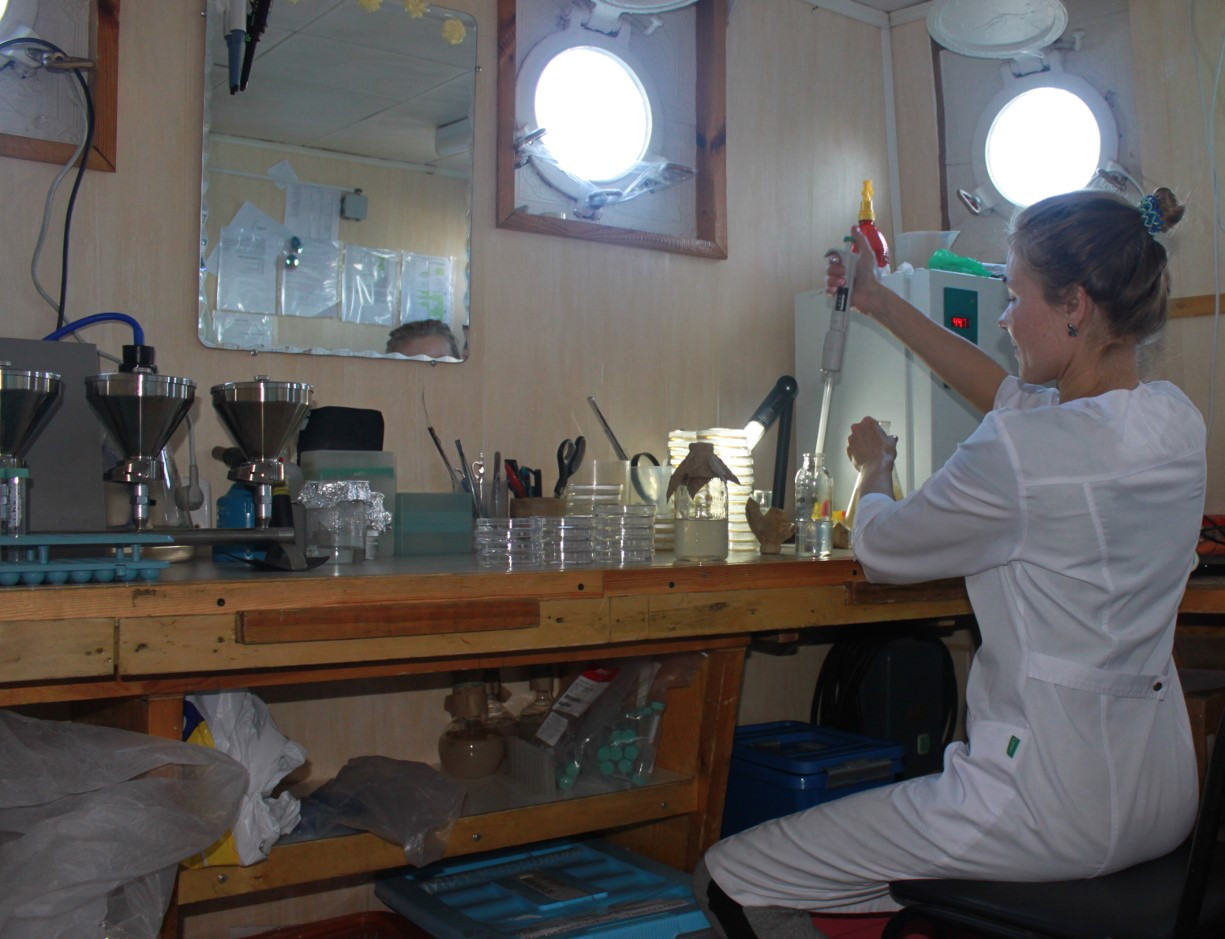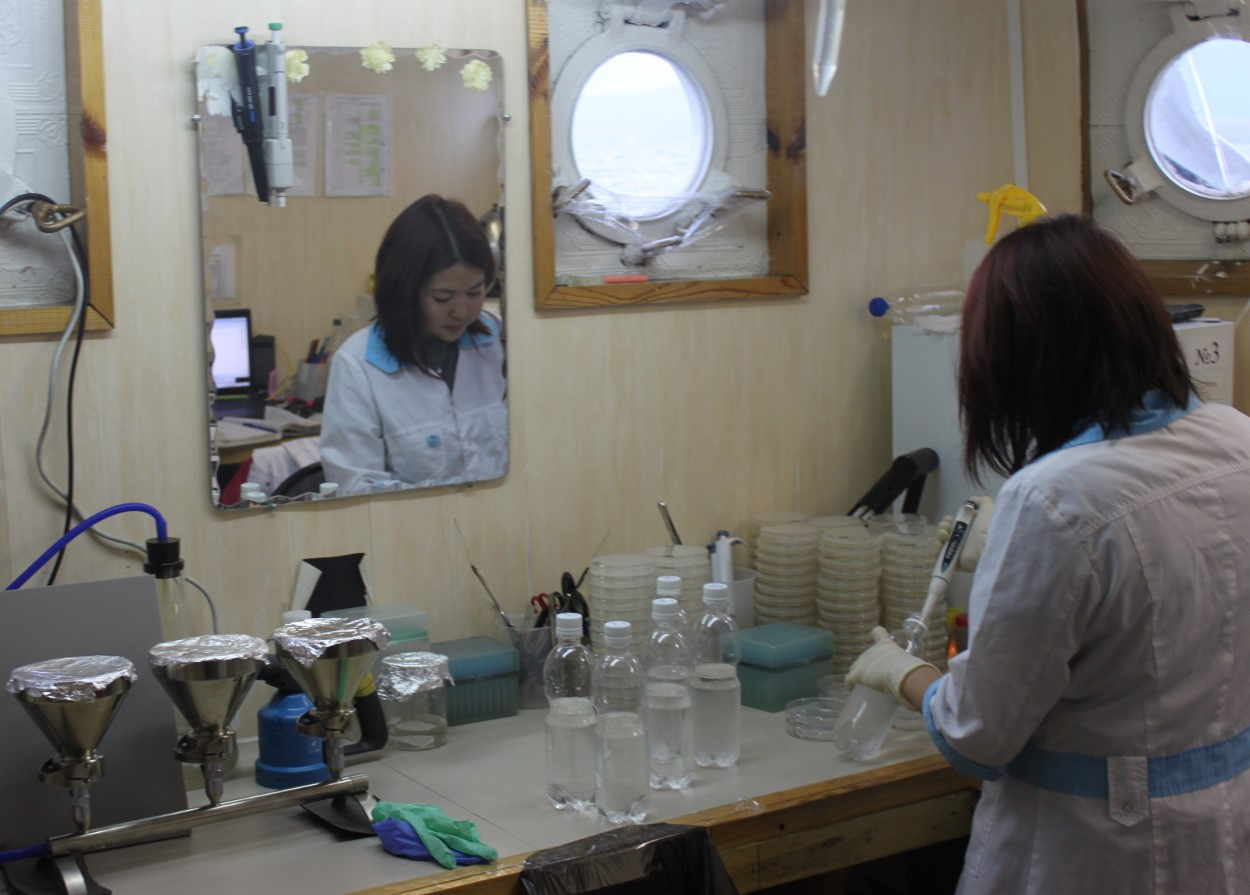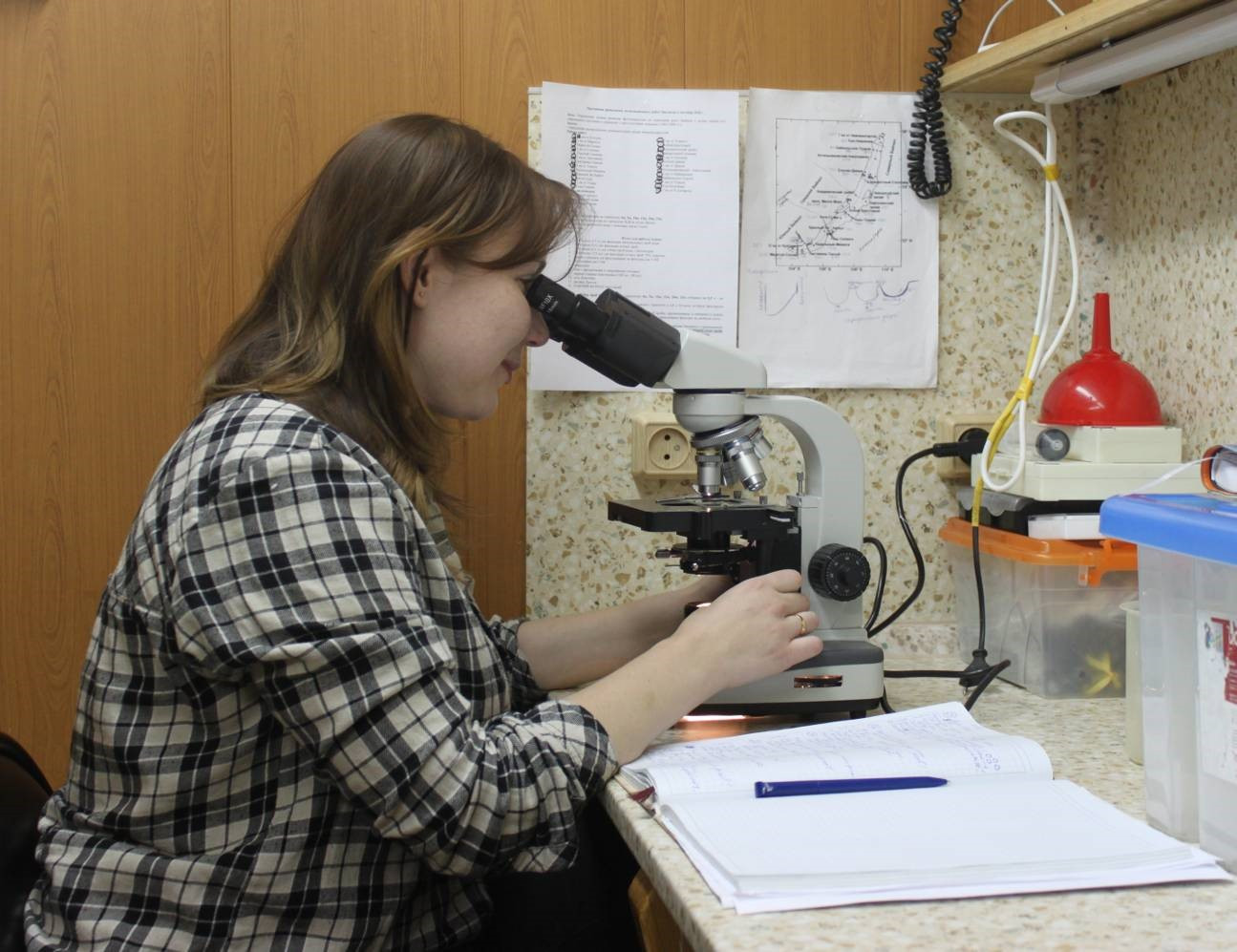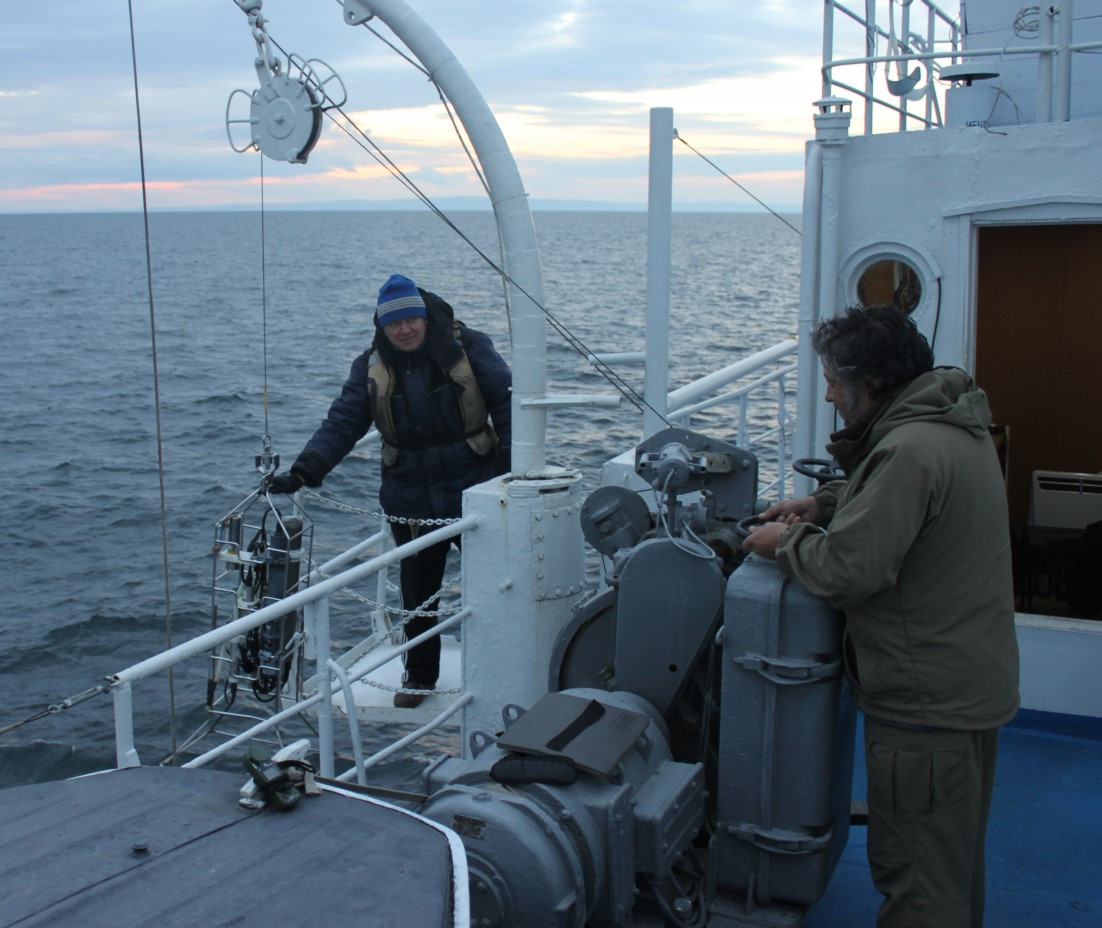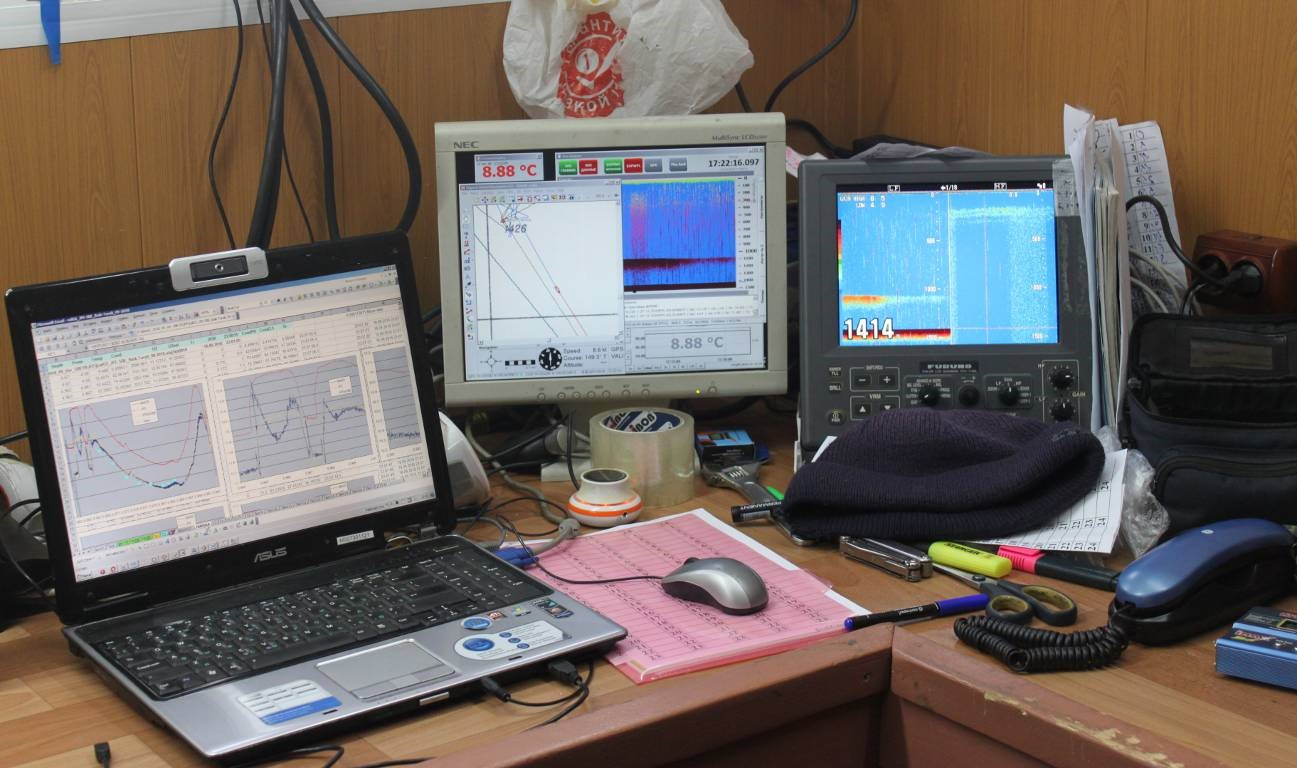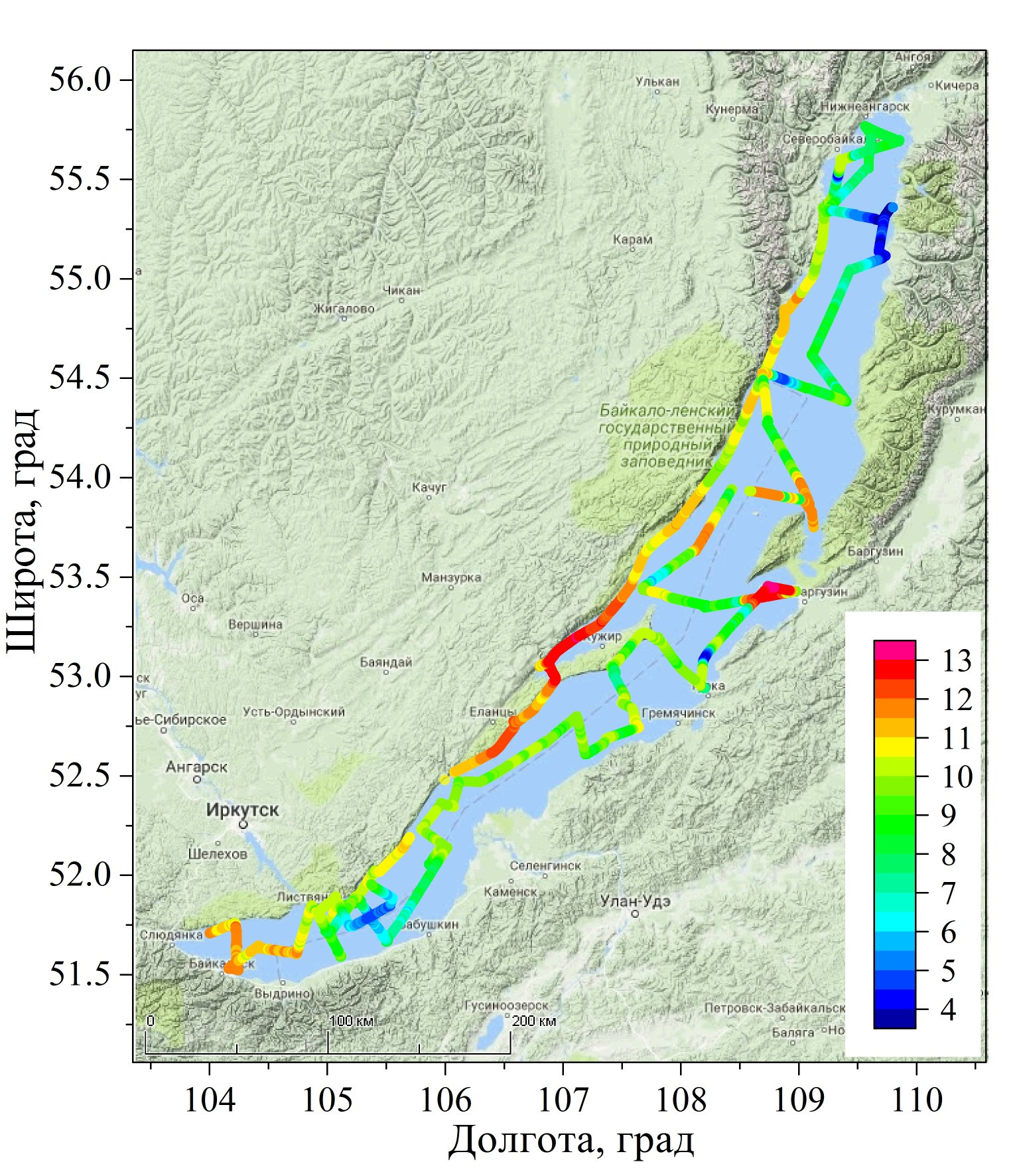Expedition on board RV “G.Yu. Vereshchagin”, September 17−29, 2018.
The complex expedition within the framework of the programmes “Assessment and Forecast of Ecological State of Lake Baikal and Adjacent Territories under Conditions of Anthropogenic Impact and Climate Change”, “Microbial and Viral Communities in Biofilms of Freshwater Systems: Taxonomic Diversity, Functioning and Biotechnological Potential” and “Studies of Evolutionary, Ecological and Molecular-Biological Aspects of Silica-Dependent Chromista as Main Members of Silica Cycle in Aquatic Ecosystems” was carried out on board RV “G.Yu. Vereshchagin”, September 17−29, 2018 throughout the entire water area of Lake Baikal.
The expedition was aimed at complex monitoring of abiotic and biotic components of the Baikal ecosystem to identify patterns of their spatial and temporal dynamics, as well as to experimentally study mechanisms and processes that affect the distribution and circulation of matter in the water column.
During the expedition, samples were taken at fixed horizons from surface to bottom using the Carousel SBE-32 cassette-type sampler, equipped with 25 bathometers of 5-liter volume each, along the standard grid of stations of the longitudinal and transverse sections of the lake. Water samples were taken for chemical, microbiological and methagenomic analysis, as well as to study distribution and species composition of phytoplankton. Phyto- and zooplankton samples were collected with a Jedi net. The works were carried out in three Baikal basins, as well as in Barguzin Bay, Chivyrkuy Bay and Maloye More strait. Water was sampled at 38 stations; of them at 26 stations the water samples were collected with a Jedi net. Water was sampled in 11 rivers for hydrochemical and microbiological analysis. Hydrophysical measurements were carried out at 56 stations using a high-precision SBE-25 CTD-probe with additional sensors of dissolved oxygen and transparency.
On board the RV, the temperature of the water surface was recorded, and the monitoring of the bubble gas seepages was performed using the Furuno echo sounder software with recording the echogram data. On the hydrometeorological station “Bolshie Koty " level sensor cable was inspected and laid.




